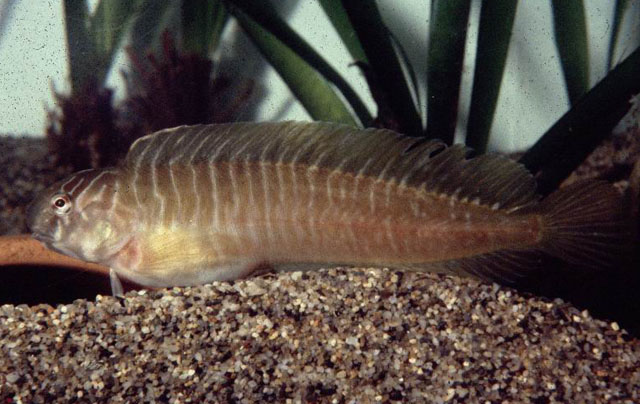| Blenniidae (Combtooth blennies), subfamily: Salariinae |
| 18 cm TL (male/unsexed) |
|
demersal; marine; depth range 2 - 15 m |
| Mediterranean Sea: Adriatic Sea, Tunisia (Ref. 42506), and Turkey. |
|
Dorsal spines (total): 11-13; Dorsal soft rays (total): 23-27; Anal spines: 2-2; Anal soft rays: 25-28. Description: Dorsal fin with 11-13 spines and 23-27 soft rays; anal fin with 2 spines and 25-28 soft rays; pectoral fin with 14 rays; pelvic fin with 1 spine and 2-3 soft rays (Ref. 128181). |
| Adults occur among seagrass, sometimes on rocky bottoms. Eggs produced by several females are guarded by male. Individuals are first females then change to males (Ref. 5981). Oviparous. Eggs are demersal and adhesive (Ref. 205), and are attached to the substrate via a filamentous, adhesive pad or pedestal (Ref. 94114). Larvae are planktonic, often found in shallow, coastal waters (Ref. 94114). |
|
Least Concern (LC); Date assessed: 11 March 2014 Ref. (130435)
|
| harmless |
Source and more info: www.fishbase.org. For personal, classroom, and other internal use only. Not for publication.

